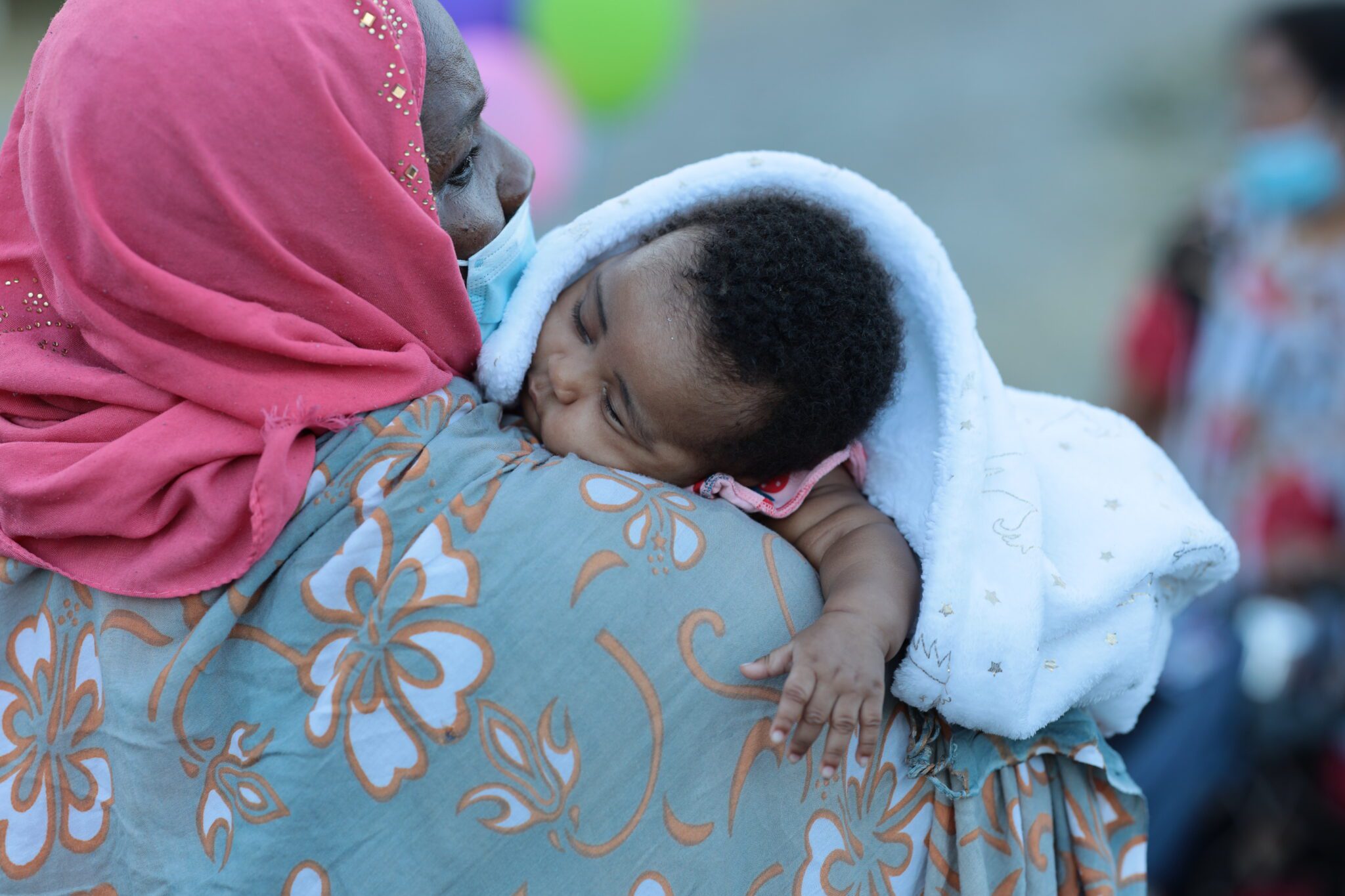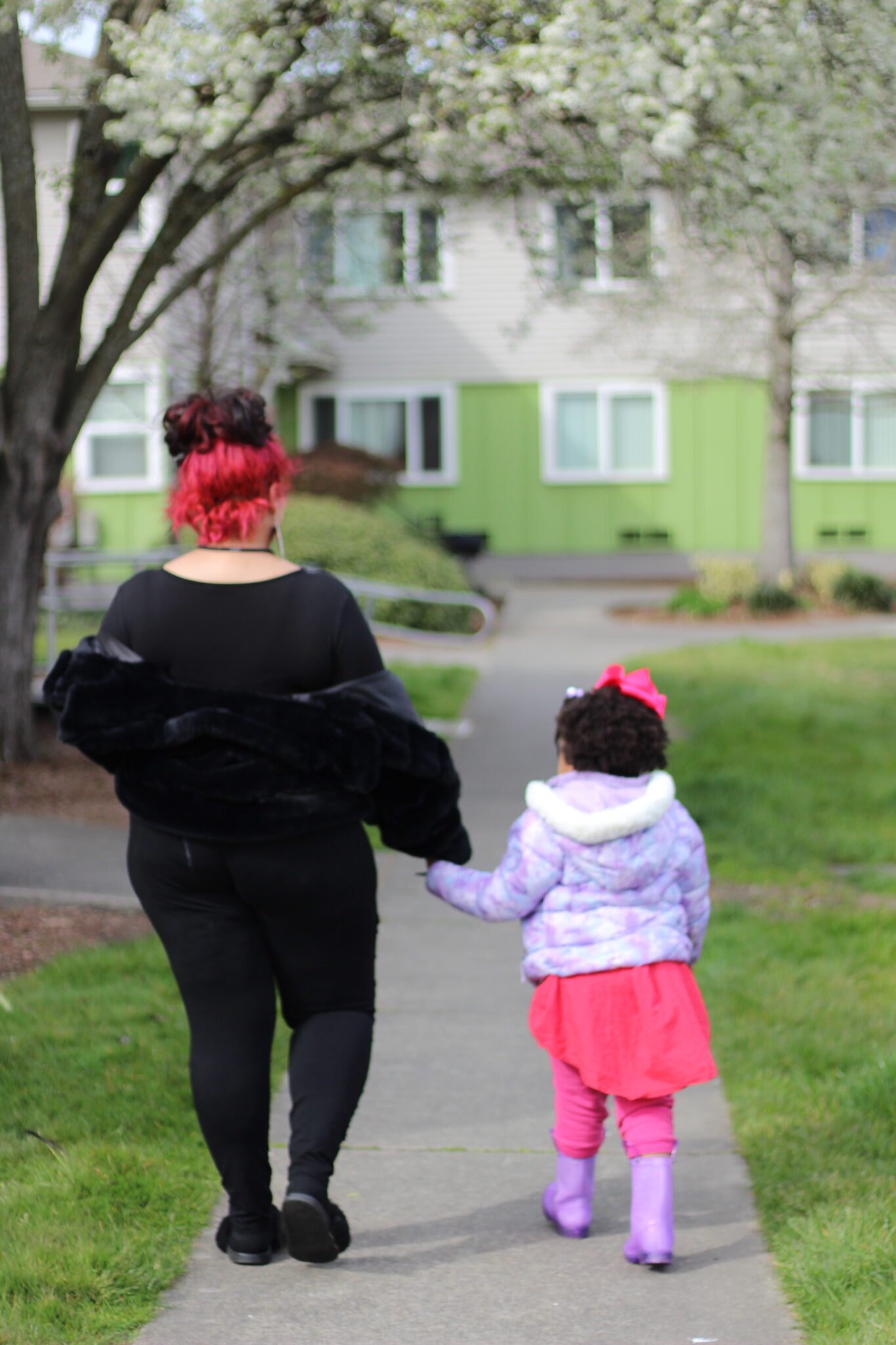
Community Corner highlights the work of Seattle Human Services’ community partners in their own words. Our goal is to gather stories and photos that illustrate their amazing work on behalf of the people of Seattle. This post highlights Mary’s Place.
What is the role your organization fulfills in your community?
Mary’s Place addresses the crisis of family homelessness in our community. As the largest family emergency shelter and services provider in King County, we work with thousands of families with children facing or experiencing homelessness to help them find safe, stable, affordable housing where they can thrive! In 2023 alone, we served 3,923 children and their families.
How does your partnership with Seattle Human Services (HSD) assist you in that role?
Funding from HSD keeps the doors open at the Allen Family Center in south Seattle, one of the only drop-in centers focused on the unique needs of families experiencing housing insecurity. At the Allen Family Center, families can access services from Mary’s Place, Navos, BrightSpark, and Mercy Housing Northwest. The Allen Family Center offers housing services, including shelter referral, housing support, and social service navigation, and serves as a home base for the Mary’s Place outreach team. Families can also access childcare resources, Kaleidoscope Play and Learn sessions, NAVOS Infant and Early Childhood Mental Health Programs, essential supplies like groceries and diapers, wellness and skills workshops, and a technology center.
What is your organization’s origin story?
Mary’s Place got its start as a day center for women experiencing homelessness in 1999. The women who attended the day center developed the structure and daily schedule that remains in effect today: two meals a day, hygiene facilities, showers, laundry, medical care, support groups, and ample resources for housing, employment, and benefits. In 2008, we saw a surge of women with children with nowhere to go at night. With the help of faith organizations in the community, we opened a rotating overnight shelter where women with children could find a safe place to spend the night. Soon after, we opened our first overnight shelter for women and children in downtown Seattle.
We opened our first 24/7 Family Center shelter for families, including dads, extended families, and pets in 2015, providing housing, employment, youth services, and health resources, co-located with local service providers. Today, Mary’s Place operates five Family Center shelters across King County that provide 720 beds for families and children.
How has your organization grown or developed in recent years?
Mary’s Place addresses family homelessness with an innovative multi-pronged approach. Beyond emergency family shelter, our mobile outreach team meets families where they’re at, in cars, tents, and encampments, to bring supplies and help address barriers to housing. With flexible funding, the team helps families move quickly into stable housing, bypassing a shelter stay.
But we know that the most effective solution to homelessness is to prevent it. Keeping families in their homes reduces trauma, particularly among children, stops the cycle of generational homelessness, and is cost-effective. Our prevention team works with families at risk of homelessness stay in their hard-won homes with rental assistance and stability supports.
Why is it important for HSD and City of Seattle taxpayers to invest in community-led work?
At Mary’s Place, the voices of our guests, those with lived experience, and those living and working in the communities we serve inform the development of our programs. We continually review our program outcomes for inequities, engage our guests in program reviews and exit interviews, and work to partner with BIPOC-led organizations to provide culturally relevant services.
Investment in our community-led approach to addressing family homelessness allows us to employ, consult, and partner with our current and former guests, organizations led by Black, Indigenous, or other people of color (BIPOC), and community leaders at schools, hospitals, and community centers to ensure the services and resources we offer fit the unique and diverse needs of those we serve.
How do your programs and services help to reduce the disparities experienced by people of color living in our region?
High rates of homelessness among people of color are driven by systemic racism, as seen in the inequities of health care, and systemic oppression that limits economic opportunity and sustains the wealth gap—exacerbating the impact of our region’s affordable housing crisis. Just over 80% of our guests at Mary’s Place are BIPOC, while those communities make up just 35% of the population of King County. Addressing the disproportionality in homelessness and ensuring that our work and operations create a workplace and service structure that advances equity, diversity, and inclusion is a priority for Mary’s Place.
Our prevention work seeks to address inequities by preventing displacement and keeping BIPOC families in their homes. We know that the biggest indicator of future homelessness is past experiences with homelessness. Children who experience homelessness are likely to have long-term effects on behavioral health, employability, relationships, and brain development, and are far more likely to experience homelessness as adults. Investing in the prevention of family homelessness and quickly connecting unhoused families to safe, stable housing is the best way to break generational cycles of trauma and homelessness that disproportionately impact communities of color.
Tell us an example of how an HSD-funded program or service impacted the life of one of your community members?
Families visit the Allen Family Center every day seeking resources and a friendly face to help navigate often complex systems. Paula is a mother with two young children who sought support in leaving a dangerous domestic violence situation. A Mary’s Place Outreach Specialist met with Paula and provided her with food and diapers from the Allen Family Center and found space in a Mary’s Place shelter for her and her children to stay while she worked towards a safe, stable housing situation.
Laura, a single mother whose daughter Lynn was undergoing kidney dialysis, came to the Allen Family Center for help when Lynn’s medical bills resulted in $14,000 of medical debt and she lost her home. A Mary’s Place Popsicle Place Coordinator—a program specially designed to serve families experiencing homelessness with medically fragile children—met with Laura to research debt relief resources and remove that barrier to housing. The family is now living in permanent housing!
What motivates your staff or keeps you going?
Dominique Alex, CEO of Mary’s Place, often says, “How you start has everything to do with where you end up.” Our staff is committed to Mary’s Place’s vision of a community where all families have safety, stability, and housing—where they can thrive and succeed. The families and children we serve are resilient, strong, and like all of us, just want a safe, warm place to live, with a door that locks. A place to have meals together, do homework, celebrate birthdays, and have a family movie night!
We celebrate with every family that moves into permanent housing. Seeing families walk out the doors of one of our Family Center shelters, keys to a safe, stable, place to grow and thrive in hand, is what keeps us going every day!

